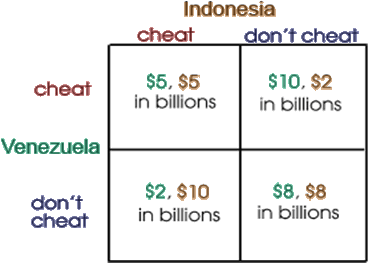This payoff matrix as in demonstrated figure for two countries that belong to the OPEC cartel exemplifies: (w) a prisoner's dilemma game. (x) a game in which neither participant has a dominant strategy. (y) why neither country will cheat as a dominant strategy. (z) why Indonesia will cheat, since this is relatively poor, and Venezuela will not cheat..

I need a good answer on the topic of Economics problems. Please give me your suggestion for the same by using above options.